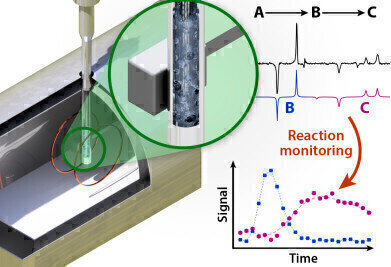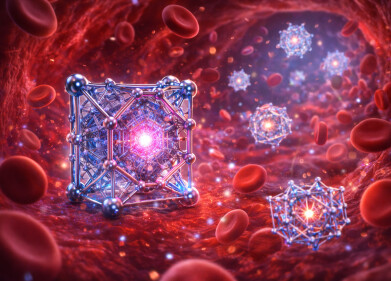News
Low-field NMR Study enables Titanium Tube Monitoring
Aug 05 2020
Scientists at Johannes Gutenberg University Mainz (JGU), the Helmholtz Institute Mainz (HIM) and visiting researchers from Novosibirsk in Russia, have developed a new method of observing chemical reactions. For this purpose they use NMR spectroscopy, but with an unusual twist: There is no magnetic field. "This technique has two advantages. For a start, we are able to analyse samples in metal containers and at the same time, we can examine more complex substances made up of different types of components," said Professor Dmitry Budker, head of the Mainz-based group. "We think our concept could be extremely useful when it comes to practical applications."
High-field NMR spectroscopy is a non-destructive method of analysing the composition of substances but precludes the use of metal containers as they act as a shield against the relatively high frequencies. NMR sample containers therefore are typically made of glass, quartz, plastic, or ceramic. Furthermore, high-field NMR spectra of heterogeneous samples containing more than one component tend to be poor. There are more advanced concepts but these often have the drawback that they do not make in situ monitoring of reactions possible.
Professor Dmitry Budker’s team applied zero- to ultralow-field nuclear magnetic resonance, (ZULF NMR) which, due to the absence of a strong external magnetic field, enabled the use of a titanium test tube; a conventional glass NMR test tubewas used for comparison in their experiments. In each case, para-enriched hydrogen gas was bubbled into a liquid to initiate a reaction between its molecules and the hydrogen.
The results showed that the reaction in the titanium tube could be readily monitored using ZULF NMR. It was possible to observe the kinetics of the ongoing reaction with high spectroscopic resolution while continually bubbling parahydrogen gas. "We anticipate that ZULF NMR will find application in the field of catalysis for operando and in situ reaction monitoring as well as in the study of chemical reaction mechanisms under realistic conditions," the researchers reported(1)
The group remembered the important contributions of their colleague Kirill Kovtunov who sadly passed away during preparation of the manuscript of this work.
More information:https://www.uni-mainz-de
(1) DB Burueva et al., Chemical Reaction Monitoring Using Zero-Field Nuclear Magnetic Resonance Enables Study of Heterogeneous Samples in Metal Containers, Angewandte Chemie International Edition, 8 June 2020.
Digital Edition
Lab Asia Dec 2025
December 2025
Chromatography Articles- Cutting-edge sample preparation tools help laboratories to stay ahead of the curveMass Spectrometry & Spectroscopy Articles- Unlocking the complexity of metabolomics: Pushi...
View all digital editions
Events
Jan 21 2026 Tokyo, Japan
Jan 28 2026 Tokyo, Japan
Jan 29 2026 New Delhi, India
Feb 07 2026 Boston, MA, USA
Asia Pharma Expo/Asia Lab Expo
Feb 12 2026 Dhaka, Bangladesh



















